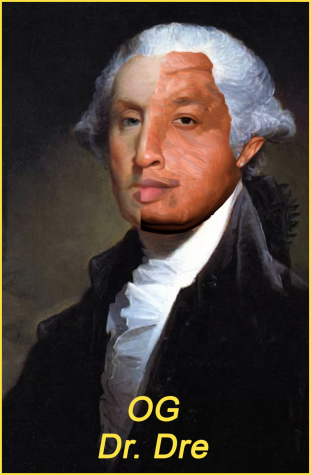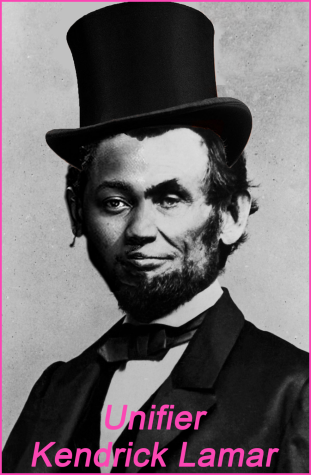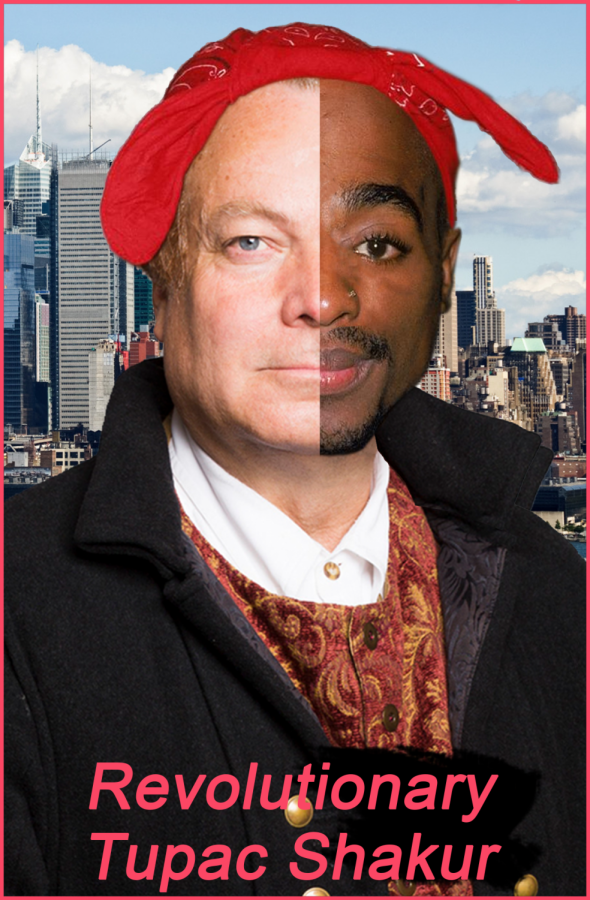Teachers inspire pupils through art display, powerful piece discusses age-old questions
Teachers Ryan Teverbaugh and Alan Bundza came up with an idea for what the duo calls Mount “Rap”more, a parody of South Dakotan landmark  Mount Rushmore.
Mount Rushmore.
The idea began in a 2009 email chain. Geography teacher Nate Orme says, “This has been forged through fire for about a decade.” Among those who weighed in were Teverbaugh, Orme and teachers Patrick Chambers and Joe Cunningham. Despite the many minds, Orme said they “never settled” on who would inhabit Rapmore. Until now.
Over seven months, Teverbaugh entertained his more peculiar thoughts when he and Bundza chilled together outside school. That’s when Mount Rapmore came up again. Now Bundza is turning Teverbaugh’s vision into what both hope will be an inspiration.
This work-of-art swaps George Washington, Thomas Jefferson, Theodore Roosevelt and Abraham Lincoln for Dr. Dre, Tupac Shakur, Lupe Fiasco and Kendrick Lamar. Bundza envisions Mount Rapmore as a painted mural of musical legend, mountain and blue sky.
Bundza works on it in his limited spare time. Once finished, photos of Rapmore will be posted on www.falconsfocus.org or students may see Rapmore in its permanent home: Teverbaugh’s classroom, 11G.
Teverbaugh, a 12-year social studies teacher, combined his knowledge for hip-hop with his expertise in history and political science. He compared each president’s and rapper’s careers.
As the first president, George Washington established precedents in policy and politics. Dr. Dre is a pioneer as well, an original gangster or “OG,” as Teverbaugh put it. Dre’s production and style throughout the years influences pop today. Teverbaugh notes that Dre discovered Tupac, Kendrick, Snoop Dogg and Eminem.
Thomas Jefferson wrote the Declaration of Independence. The document itself and Jefferson’s all-out rejection of the status quo, mirrors Tupac’s career. He took beef and gave it, Teverbaugh said. The rallying of a nation because of Jefferson’s revolutionary words is similar to how the divide of East Coast versus West Coast rap started to blur upon Tupac’s death, added Teverbaugh calling the rapper arevolutionary of writing and sound.
But where Jefferson was a revolutionary, Roosevelt was an evolutionary. The political progressive ushered in his square deal policy, creating government support programs and expanding the precedent of government involvement in civilian life, according to Teverbaugh.
Roosevelt’s counterpart is evolutionary artist Lupe Fiasco, whose content diversifies and increases at a faster rate than other rappers, Teverbaugh said. While the 26th U.S. president said, “Speak softly and carry a big stick,” Fiasco’s driving force is his smooth delivery, strong lyrics and commitment to social issues.
 Teverbaugh paired Lamar with Lincoln, noting both built or build compatibility among diversity. Lincoln preserved the Union. Lamar bridges his varied fans through imaginative storytelling and loaded diction, while providing insights into his own cultural hardships. “Kendrick is the great unifier,” Teverbaugh said. “When he speaks, everybody listens. Even Taylor Swift and Adele are like, ‘Dude’s legit.’”
Teverbaugh paired Lamar with Lincoln, noting both built or build compatibility among diversity. Lincoln preserved the Union. Lamar bridges his varied fans through imaginative storytelling and loaded diction, while providing insights into his own cultural hardships. “Kendrick is the great unifier,” Teverbaugh said. “When he speaks, everybody listens. Even Taylor Swift and Adele are like, ‘Dude’s legit.’”
Examing this mural may help students stop and think about power — in art and all of life, said Orme.
“I think any artistic work gives us a choice to question,” he said. “If you were to think about Mount Rapmore, is that a final tally? Who gets to decide who belongs and who doesn’t?”


